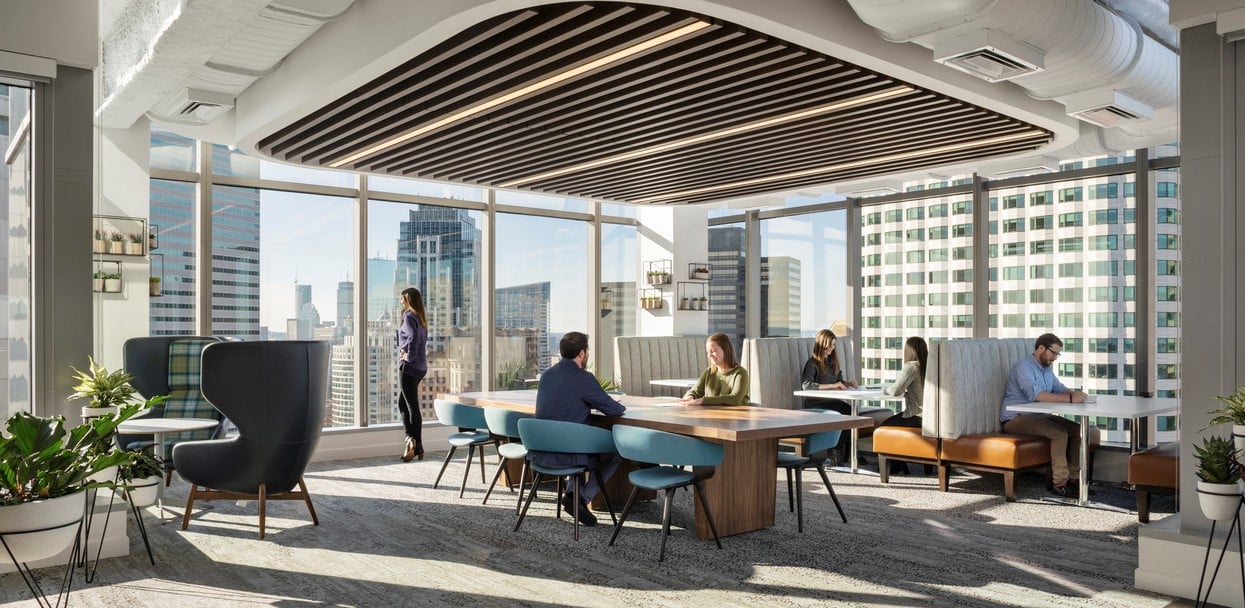
As employees return to the office, business and employee needs are being re-evaluated and workplaces transformed. Kristian Jones, Principal of Design, Asia shared his insights with Legal Business Online on how the legal services industry are optimising their office design to adapt to new ways of working.
Traditionally, law firm offices have consisted of large boardrooms, private meeting spaces, partner offices and individual workstations. But with many desks and offices sitting partially empty during the pandemic combined with learnings from remote working, there is a shift in space utilization and focus on shared spaces and practice group neighborhoods to support collaboration and innovation in the post-pandemic era.
Dedicated meeting spaces and smaller quiet rooms or areas are still on offer to accommodate varied work styles and business needs, and importantly adhere to privacy requirements and secure storage for sensitive-case related material.
Flexibility is being seen around the globe, both in terms of working arrangements and spaces as businesses evolve and grow. In the legal services industry, this is a key consideration to address changing client and project-based solutions and provide a diverse range of spaces to enable employees and clients to thrive in the workplace.
There is a need now to focus on more than just just the interior design but also how the whole work experience becomes unique to the brand and the values that the business wants to express. Dialing up key moments through your blended physical, digital and human interactions (whether its breakouts in the social spaces, online booking platforms or hospitality touchpoints) become signature experiences connecting staff, clients and future talent to the culture and purpose of the brand.
“Due to the nature of the legal industry, there will always be a requirement to balance closed-door environments to preserve confidentiality and create collaborative, inviting and adaptable spaces to meet current and future needs of staff and clients,” Kristian said.
“Recent strategy and design projects for global and regional legal firms have seen clients’ placing greater focus on talent management, collaboration, and innovation.
“Office design and amenity was identified in our research, The Reluctant Returner, with almost 95 per cent of respondents reporting a desire to make improvements to the physical workplace including more amenity, outdoor and physical spaces, improving the layout, and creating more private spaces,” he added.
Like other industries, the legal sector has not been immune to the impacts of the pandemic with many businesses delving deeper to create compelling workplaces while responding to business and user needs and navigating changing government regulations.
What impact has COVID-19 had on the legal workplace?
Gain insight into the key learnings from the legal sector in our study of 3,000 office workers and 2,750 employers across Europe. Download the report.


